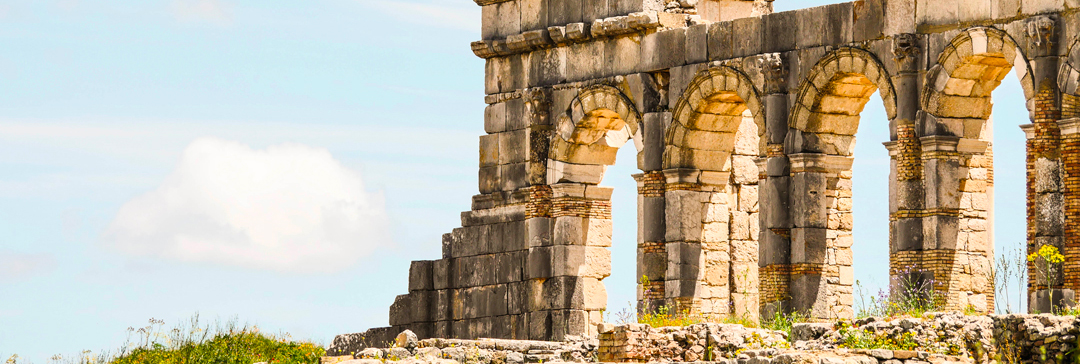Companies working in the extractive industry are not the only organizations that learn how to manage heritage sites. Those working in the transport, utility and a host of other industries are also likely to come across one or more heritage sites during the course of a development project.
What is world heritage and why it matters
UNESCO designates World Heritage sites as “places on Earth that are of outstanding universal value to humanity and as such, have been inscribed on the World Heritage List to be protected for future generations to appreciate and enjoy.”
Heritage sites are protected to varying degrees in most countries through national and international laws and conventions. This includes UNESCO’s Convention Concerning the Protection of the World Cultural and Natural Heritage.
Not all heritage sites are globally revered treasures such as the Pyramids of Egypt or the Galapagos Islands in Ecuador. Some may be small but ancient burial sites or even a sacred tree that has been used for generations to hold spiritual ceremonies. Still others may have fallen from local memory over the eras, but will still hold significant historical, cultural or spiritual importance for their communities.
When heritage sites and land projects collide
Encountering a possible heritage site doesn’t necessarily mean the end of a development project. With effective stakeholder engagement, companies can often come to an agreement with affected communities in a reasonable amount of time that both sides can live with.
If a new heritage site is discovered in the course of a development project, it is incumbent upon the company to properly map and document the site. This document should also include what type of impact the project has had or may have on the site as well as any special steps that were taken, such as the holding of a ceremony, compensation paid, etc. This information will become an important archival record enriching the historical knowledge of the site.
It’s also important for the company to transmit the necessary information to any external stakeholders who will need to get involved to identify and protect the site. These stakeholder may include community Elders, anthropologists, archeologists and the like.
Unlike landowners or residents, however, the majority of heritage sites are not easily compensated nor can they always be repaired in the case of damage. In some instances, though, heritage sites can be relocated.
When the relocation of a heritage site is possible and determined as the preferred course of action, the company will typically need to follow a number of steps:
- Carrying out close and careful consultation with key stakeholders (see our article on how to identify, understand and prioritize stakeholders)
- Updating the site’s coordinates (such as with the GIS mapping tool in Borealis stakeholder software)
- Documenting the site’s former location
Companies are now expected to make this effort willingly and proactively. Doing so will demonstrate good governance, transparency and accountability. It will also strengthen the corporate image both locally and globally – as well as the bond of trust the company has forged with influential stakeholders.
Risks of mismanaging heritage sites
Consequences can be dire for organizations that fail to do the right thing when their development project overlaps with a natural, cultural or historical site. As some organizations have learned, these consequences can go far beyond simply raising the ire of stakeholders groups extending far beyond local communities. It can also lead to bad press, loss of financing and hefty fines. Some financial lenders, such as the IFC, have specific guidelines on protecting cultural heritage from adverse impacts of project activities.
The mismanagement of heritage sites can also create a lasting negative record for the company that can jeopardize its guidelines on protecting cultural heritage from adverse impacts of project activities. Mismanaging doesn’t necessarily mean gross negligence; it can simply be the failure to keep internal staff properly informed. This is often observed when data is neither centralized nor easily accessible to those who need to be in the know.
Site mismanagement of any kind increases the likelihood that any future proposed development project will be more heavily scrutinized by local governments and community groups, financial lenders and international regulators, environmental and cultural groups – and the international community as a whole.
In contrast, organizations that can demonstrate that they do the right thing – not because they were forced to, but out of consideration for affected stakeholders – will improve stakeholder trust. Doing the right thing becomes easier when you have a solid stakeholder engagement plan and the right tools.
See our step-by-step guide for building a solid stakeholder engagement plan.
How linking stakeholder communications to heritage sites improves insights
Using a fit-for-purpose system such as Borealis stakeholder management software helps to avoid problematic oversights. Among other things, it:
- Standardizes processes for managing heritage sites, improving overall efficiency
- Centralises all related data, keeping information easily accessible to anyone who needs to access it
- Creates a transparent and auditable trail, serving as a historical record that will endure as team members, stakeholders, projects and business objectives change over time
The Land Management Module in Borealis includes a Heritage Site feature that allows you to map existing or newly discovered heritage sites and link all stakeholder communications, issues, activities and sentiments to the site. You can also link all company assets associated with this Heritage site.
The Heritage Site feature creates a site register for recording, managing and reporting on all claimed and confirmed heritage sites with full traceability. Among other things, you can:
- Set the status of each claimed heritage site: Proposed, Reviewed, Verified and Confirmed
- Create an audit trail for any changes to a site’s status: Who changed the status, on what date, and for what reason
- Set the current condition of the site:, Disturbed, Not Valued By Community, Preserved, Relocated
- Create an engagement plan for each site
- Enter all contact information for stakeholders linked to each site
- Link all communications to each site and to the concerned stakeholders
- Link all related company assets
- Manage compliance requirements for the site using the Regulatory & Compliance Management module
All this information will be centralized and accessible to users with access rights.
Managing heritage sites in Indigenous communities
Indigenous populations are intrinsically linked to the land, in which the history of their people is deeply inscribed – sometimes dating back across millennia. Indigenous communities around the world have ancestral lands as well as highly venerated sites that are used for cultural ceremonies. These sites are often kept secret, with only a few people knowing their exact location. In some instances, these locations may shift over time.
Best practices always advocate for protecting data privacy. This is especially true for sacred heritage sites. Organizations that become aware of such sites during their course of their development projects must take extra care to help protect this secrecy, which may have been carefully safeguarded for generations.
Organizations will probably even need to keep this information confidential from most internal staff, all without blocking their access to important communications or commitments regarding these sites.
Thanks to the data segregation in Borealis stakeholder engagement software, highly sensitive information can be kept confidential in a number of ways:
- By using site numbers instead of names in the site register and in the GIS map
- By turning off access to sensitive information such as worship period, age of site, local resource person, etc. to all users except for those selected few who need to know
Community relations teams should also be aware of the importance of engaging with the right local stakeholders. Tribal chiefs should be consulted in all matters pertaining to heritage sites. Elders may also be called in as their knowledge of the land is extensive. These stakeholders will also know if other individuals should be consulted, such as archeologists or historians with specific local knowledge.
See how a Canadian mining company is using stakeholder management software to make a positive impact affected communities and its social license to operate
Tips for managing heritage sites
Few companies relish the thought of having to deal with the additional complexities a heritage site brings to their extractive or energy project. However, managing these sites with transparency and accountability is much easier when you have the right knowledge and the right tools.
Borealis stakeholder engagement software is used by extractive, transport and utilities companies around the world to effectively manage all their stakeholder engagement activities, including the extensive community communications and highly sensitive information surrounding these irreplaceable sites.
Improve your land acquisition process and better manage land and asset-based projects – including heritage sites. Talk to an expert.







